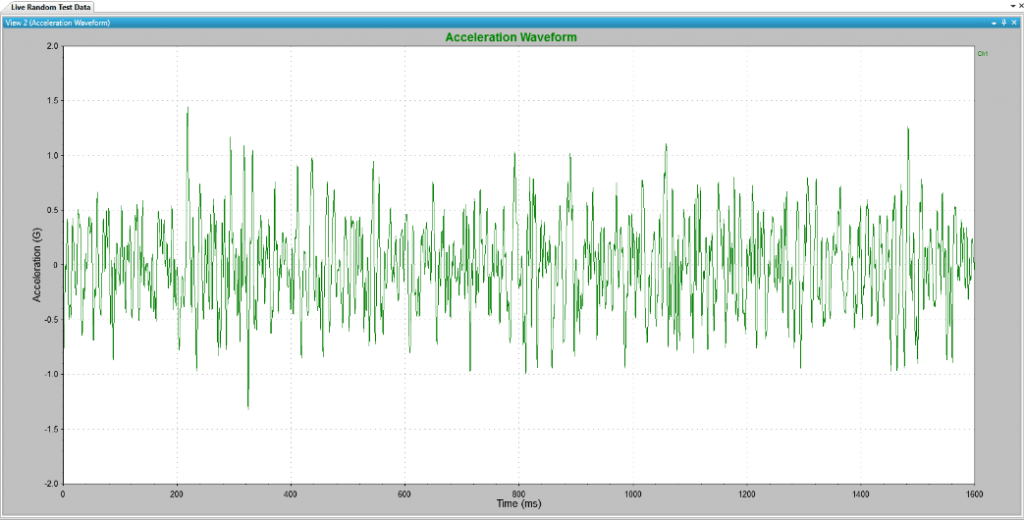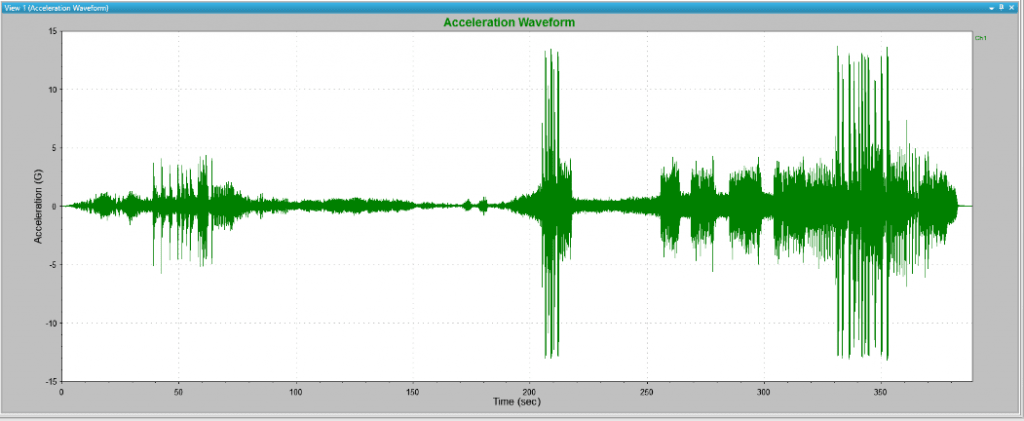In vibration testing, test engineers must often decide the most appropriate test type for the situation at hand. Sometimes the answer is clear, other times not so much. There are many test options to choose from and a seemingly infinite number of test situations.
The engineer may easily narrow down their options but have trouble deciding between two similar test types. For example, a random test and Field Data Replication (FDR) are both suitable in many circumstances. So, how do you decide between a random or an FDR test? Below, we provide several items to consider.
Fundamental Differences: Random and FDR
A random vibration test simultaneously outputs random vibrations that include the test’s entire frequency range over a defined period. The acceleration waveform for a random test displays a “ragged” plot because a random test excites the device under test (DUT) with random amplitude vibrations across a defined frequency range (Figure 1).
In comparison, a Field Data Replication (FDR) test records data from the operational environment then plays it back as a new vibration test (Figure 2).
Comparison of Random and FDR Tests
Random and FDR are beneficial in unique ways.
Field Data Replication
Most significantly, engineers can use an FDR test to replicate the operational environment. If a product has one unique and known environment, it can be recorded and replicated in the lab.
For example, suppose all vehicles must be tested for road vibrations, and the road test for all vehicles is the same number of laps on a defined test track. In this instance, a recording of a vehicle’s vibrations on the test track could be replicated in a lab using FDR. Instead of taking the vehicles to the road test, the engineer can bring the road test to the lab.
However, an FDR test only represents one specific environment, and most DUTs experience multiple. This is a limitation of FDR: it only tests one of the many possible operational environments. Additionally, accelerating an FDR test is not easy. Consequently, if an engineer intends to use an FDR test to bring a DUT to failure, they must run numerous cycles of the recording.
Random
Random vibration tests have the benefit of simulating many operational environments. In addition, a random vibration test can be accelerated with Kurtosion®, thereby saving the test engineer’s time.
A disadvantage is that random testing is not an exact replication of the real-world environment. It is only an approximate simulation.
Summary of Use Cases
As an easy takeaway, we recommend using FDR when replicating a single and unique environment, and Random when simulating multiple environments or accelerating a test.


